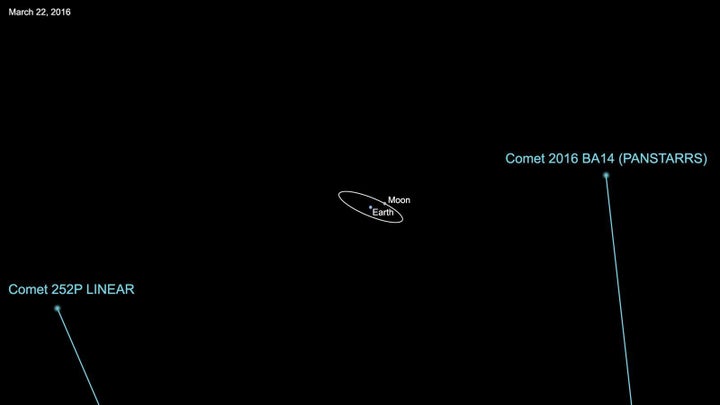Earth is about experience one of its closest comet flybys as two zip past us today and tomorrow.
The last time we had such a close brush with a comet was in 1983, Science Alert reports.
NASA has assured everyone that both events will be quite safe, with the second comet's closest approach expected to take place tomorrow at around 2:30pm (7:30 am PDT).

The first flyby, of Comet 252P/LINEAR, will take place today just after noon (5:14am PDT).
Estimated to be around 230 metres, it will whizz past at a range of 3.3 million miles - the fifth closest comet in recorded history.
Tomorrow, the second comet, P/2016 BA14, is the closest it will get to us for at "least the next 150 years," said Paul Choas, manager of NASA's Center of NEO Studies (CNEOS) at the Jet Propulsion Laboratory
If you're looking to watch both flybys, there's some good and bad news according to Science Alert.
Even at the first comet's closest point, those in the Southern Hemisphere are unlikely to get a good glimpse of the comet as we're expecting a full moon.
NASA added that "anyone hoping to see them will need powerful, professional-grade telescopes, due to their relatively small size."
However, the Virtual Telescope Project, will be hosting live broadcasts of both comets, so you can tune in to see nature's spectacular show at its best.
Happy comet watching!
